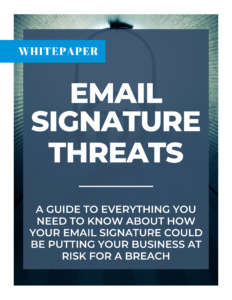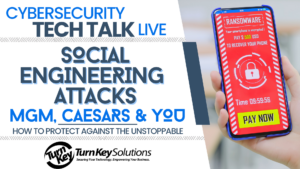 Cybersecurity isn’t just about firewalls and software; it’s about people. Cybercriminals are increasingly exploiting human behavior through advanced social engineering and malicious HTML email attachments, making these threats harder to detect and more dangerous than ever.
Cybersecurity isn’t just about firewalls and software; it’s about people. Cybercriminals are increasingly exploiting human behavior through advanced social engineering and malicious HTML email attachments, making these threats harder to detect and more dangerous than ever.
Without proper training and robust email defenses, your organization is exposed. In this post, we’ll explore the methods hackers use, how to recognize these threats, and the key steps you can take to protect your business.
Social Engineering: The Human Element of Hacking
When we think about cybersecurity, we often picture advanced tools like firewalls and antivirus programs. However, the human element is frequently the most vulnerable. Social engineering takes advantage of psychological triggers, such as trust, fear, and curiosity, to deceive employees into revealing sensitive information or granting unauthorized access.
Common Social Engineering Tactics That Threaten Your Business
Phishing
Hackers impersonate trusted sources, banks, executives, and vendors, creating urgency to prompt immediate action. Common delivery methods include:
- Fake emails and websites
- Spoofed phone calls or SMS
- Fraudulent social media profiles
Think You Are Currently Under Attack? We’re Here to Help!
Baiting
Whether it is a “free giveaway” or an infected USB drive, baiting entices users with too-good-to-be-true offers, often masking malware or ransomware payloads.
Tailgating (Piggybacking)
An attacker might follow an authorized staff member into a secure area, sometimes disguised as a delivery person or vendor, to access sensitive systems or equipment.
Pretexting
Cybercriminals build a fake scenario, posing as IT support or HR, using authority as leverage to extract sensitive data like login credentials.
Scareware
Fake virus alerts or law enforcement warnings trick users into installing malicious software or clicking harmful links.
The Growing Threat of HTML Email Attachments
While PDFs have long been a common file type for communication, HTML attachments are rapidly becoming a top concern. A recent Barracuda report reveals that 23% of HTML email attachments contain malicious code, making them the most weaponized file format in use today.
What Makes HTML Attachments So Dangerous?
HTML files are versatile and capable of embedding:
- Hidden phishing forms to steal login credentials
- JavaScript code that activates malware on click
- Redirect links to fake websites that capture sensitive data
Even experienced users may open these files unknowingly, especially when the email appears to come from a familiar source.
Business Leaders: How To Fortify Your Cyber Defenses
No single solution will protect you completely. However, a layered cybersecurity strategy can dramatically reduce risk and build long-term resilience.
- Conduct Regular Cybersecurity Awareness Training
Your team is the first line of defense. Provide training to help employees:
- Identify phishing attempts (check grammar, verify urgency)
- Avoid clicking unsolicited links
- Verify unknown senders before opening attachments
- Report suspicious activity to IT immediately
- Create and Enforce Access Control Policies
Adopt a Zero Trust approach:
- Grant only the minimum access necessary to each role
- Require strong, unique passwords for all accounts
- Enable Multi-Factor Authentication (MFA) to add extra verification layers
- Invest in Advanced Email Security Tools
Modern email protection solutions use AI and machine learning to:
- Scan email content for phishing links
- Block suspicious attachments (including HTML and PDF)
- Analyze behavior patterns for early threat detection
- Stay Updated and Vigilant
Cyber threats evolve. Update your antivirus software, operating systems, and employee protocols regularly.
Food For Thought: What worked last year might not be effective today.
Why This Matters for Small and Medium Businesses (SMBs)
SMBs are especially vulnerable. With limited IT resources and a growing reliance on email for daily operations, one careless click could result in a data breach, financial loss, or reputational damage. Worse, many SMBs don’t survive the aftermath of a major attack.
Now is the time to take a proactive stance.
Protect Your Inbox, Secure Your Future
The fusion of social engineering and HTML email threats represents a serious danger to modern businesses. By understanding how hackers exploit human behavior and communication channels, business leaders can build a smarter, safer organization.
Cybersecurity isn’t just IT’s responsibility; it’s a company-wide priority. Educate your team, secure your systems, and revisit your policies often.










